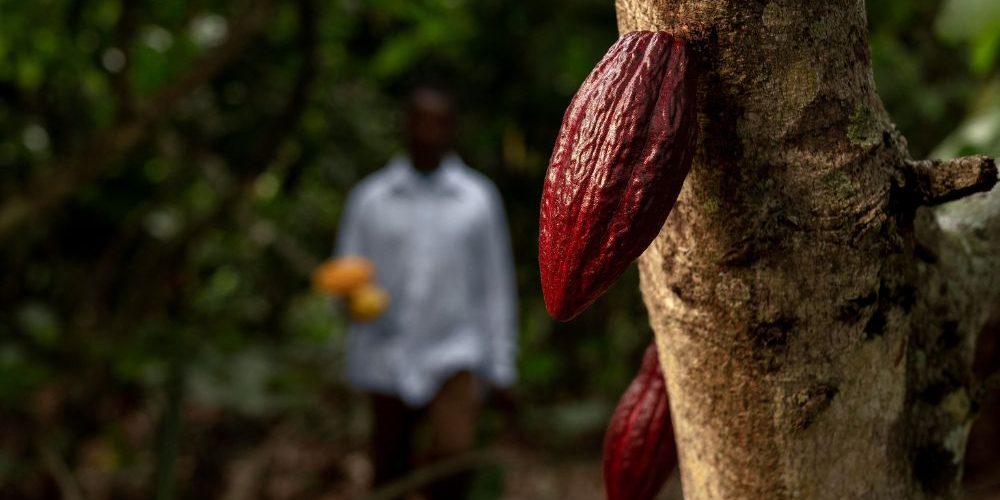Imagine walking through vast fields filled with lush cocoa trees in Malindi, Kenya, their branches heavy with pods brimming with chocolatey goodness. Welcome to the enchanting world of cocoa farming in Malindi, where the aroma of cocoa permeates the air and the soil holds the secrets to cultivating this delectable treasure.
In 2020, the Kenyan government announced that it would be introducing cocoa farming to the country for the first time. The government supplied 40,000 cocoa seedlings to farmers in 10 counties, including Kilifi, Kwale, Taita Taveta, Lamu, Busia, Bungoma, Vihiga, Kakamega, Kisumu, Siaya, Homabay, and Migori. The introduction of cocoa farming in Kenya was seen as a way to diversify the country’s agricultural exports and create new opportunities for farmers. Cocoa is a high-value crop, and its cultivation was expected to boost the incomes of farmers in the targeted counties.
The Kilifi county government worked with Kenya Agricultural and Livestock Research (KALRO) and a Ghana-based organisation to introduce cocoa farming to Kenya. KALRO provided farmers with training on how to grow and care for cocoa trees, and the organisation provided farmers with seedlings and other inputs.
The introduction of cocoa farming in Kenya was a positive development for the country’s agricultural sector. Cocoa is a high-value crop that has the potential to generate significant income for farmers.
- Understanding Cocoa Farming
- Discovering the Sweet Spot: Cocoa Growing Conditions
- Preparing for Cocoa Farming in Malindi
- The Journey of Cocoa: From Planting to Harvesting
Understanding Cocoa Farming
Discovering the Sweet Spot: Cocoa Growing Conditions
Cocoa finds its home in the sun-kissed lands of Kenya, particularly in Kilifi South, Kilifi North and Malindi which shine as prime locations for cocoa cultivation. The favourable climate, with moderate temperatures and ample rainfall, provides the ideal conditions for cocoa trees to thrive. Let’s take a closer look at why Malindi is likely to become the cocoa capital of Kenya. Malindi has favourable climatic conditions that allow the cocoa to thrive. It is grown in warm, humid climates and requires well-drained soils, perfect conditions found in Malindi.
- Temperature: Cocoa trees prefer warm, humid climates with an average temperature of 25-27°C. They can tolerate short periods of cooler temperatures, but they will not thrive in cold climates.
- Humidity: Cocoa trees need high humidity levels of 70-80%. They will not do well in dry climates.
- Rainfall: Cocoa trees need an annual rainfall of 150-200 cm. They can tolerate some drought, but they will not produce well if the soil dries out completely.
- Soil: Cocoa trees prefer well-drained, loamy soils that are rich in organic matter. They will not do well in heavy clay soils or soils that are prone to waterlogging.
- Sunlight: Cocoa trees need full sun to thrive. They will not do well in shaded areas.
Preparing for Cocoa Farming in Malindi
Laying the Foundation: Soil Preparation for Cocoa Farming
Just like a sturdy house needs a solid foundation, successful cocoa farming begins with preparing the soil. Cocoa trees have their preferences, requiring well-drained, fertile soils to flourish. But fear not, with the right soil preparation techniques, you’ll create the perfect cocoa cradle for your plants. Let’s dig into the soil requirements and get your cocoa farm off to a solid start!
Sourcing the Seeds: Obtaining High-Quality Cocoa Pods
Seeds hold the promise of new beginnings, and cocoa pods are no exception. To embark on your cocoa farming journey, you’ll need to source high-quality cocoa pods for planting. You can get cocoa seedlings at KALRO Industrial Crops Research Institute in Mtwapa Kilifi.
The Art of Propagation: Germinating Cocoa Seeds
Planting a seed is like planting a dream. In cocoa farming, propagating cocoa seeds requires a delicate touch and an understanding of the germination process. There are two main methods of propagating cocoa plants:
- Seed propagation: This is the most common method of propagating cocoa plants. Cocoa seeds are planted in a nursery bed and then transplanted to the field when they are about 6 months old.
- Vegetative propagation: This method is used to propagate clones of existing cocoa trees. Vegetative propagation can be done by grafting or by air layering.
The Journey of Cocoa: From Planting to Harvesting
The journey of cocoa from planting to harvesting takes about 2-3 years. However, it can take up to 5 years for a cocoa tree to start producing a significant amount of fruit.
Here are the steps involved:
- Planting: Cocoa trees are planted in a nursery bed and then transplanted to the field when they are about 6 months old.
- Flowering: Cocoa trees start to flower when they are about 3-4 years old. The flowers are small and white, and they bloom in clusters.
- Fertilization: Cocoa trees are pollinated by insects. The flowers only last for a day, so pollination must happen quickly.
- Fruiting: Cocoa pods start to form about 5-6 months after pollination. The pods are green at first, but they turn yellow or orange when they are ripe.
- Harvesting: Cocoa pods are harvested when they are ripe. The pods are cut from the tree with a machete, and they are then opened to remove the beans.
- Fermentation: The beans are fermented for about 5-7 days. This process helps to develop the flavour of the beans.
- Drying: The beans are dried in the sun for about 5-7 days. This process helps to remove the moisture from the beans and to preserve them.
- Processing: The beans are then processed to remove the husks and grind them into cocoa powder or chocolate.
Cocoa is a labour-intensive crop, and it is often grown by small farmers.
Cocoa trees can live for up to 50 years, but they only start producing fruit after about 5 years. The fruit of the cocoa tree is called a pod, and it contains about 40 beans.
Maximising Cocoa Yield
The Art of Cultivation: Best Practices for Cocoa Farming
Cultivating cocoa is an art that requires finesse and expertise. To maximise your cocoa yield, it’s crucial to employ the best practices in cocoa farming. From proper maintenance to effective disease control, we’ll explore the essential steps to ensure your cocoa garden thrives. Get ready to unleash your inner cocoa artist!
The Future of Cocoa Farming in Kenya
Cocoa’s Growing Popularity: The Global Demand
The world’s love affair with chocolate knows no bounds, and the demand for cocoa continues to rise. Discover the increasing popularity of cocoa and how Kenya’s cocoa farming industry is positioned to meet the global appetite for this delectable delight. The future looks bright for cocoa farmers in Kenya!
Conclusion
Are you ready to seize the opportunity and dive into the world of cocoa farming in Kenya? We sell fertile agricultural land in Malindi, Kenya at an affordable price. Contact us today or Whatsapp us at +254 799 999 797 and start planting, nurturing, and harvesting your cocoa dreams today!
Happy farming and may your cocoa fields be abundant with sweetness!








